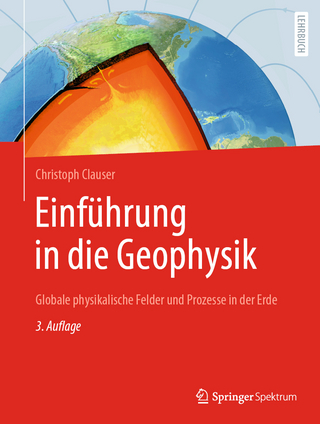
Structural Geology
Springer International Publishing (Verlag)
978-3-030-80794-8 (ISBN)
Dr. A. R. Bhattacharya is a Retired Professor of Geology from the University of Lucknow, India. He had obtained his B.Sc, M.Sc. and Ph.D. degrees from this university, and later he joined the faculty of the Department of Geology where he taught, and carried out research work in, structural geology for about four decades. His research interests include geometry and genesis of structures, shear zones, fabric development and evolution of structural complexes. Some of his notable contributions include: a new classification of folds, two new parameters of fold geometry, an empirical equation for natural folds, a mathematical model of fold development, quantitative modelling of shear zones, and a graphical method for distinguishing different fold generations. His work on the Himalaya has thrown newer lights on the structure and deformational processes in the Kumaun-Garhwal sectors that have far reaching implications for understanding the evolution of mountain belts. His researches on the Bundelkhand craton of central India especially on identification of crustal scale shear zones, structural elucidation of quartz reefs, mesoscopic fold geometry and deformational processes in the internal domains of rocks, are of pioneering nature for this craton. One of his research papers (published in Tectonophysics, vol. 387, 2004) was selected as "Top 25 Hottest Papers" by Science Digest and it was ranked 15th. He has co-edited two research level books. He has been an Alexander von Humboldt Fellow of Germany under which he visited Germany a few times, having worked at Göttingen University and at Aachen University of Technology. In addition, he had also visited the U.S.A., France, England, Italy, Switzerland, Belgium and Holland for academic/research purposes. He has a vast geological field experience of the Himalaya and the peninsular shield of central India, as well as of several structurally important regions of the world, mainly the Appalachians of the U.S.A., Alps of Italy, Jura of Switzerland, Variscan Belt, Rhine Graben and NW Schist Belt of Germany, and Palaeozoic-Mesozoic Belts of Belgium and Holland.
Chapter1.- Introduction to structural geology.- Chapter2.- Attitudes of structures.- Chapter3.- Stress. Chapter4.- Strain.- Chapter5.- Estimation of strain.- Chapter6.- Rheology.- Chapter7.- Concept of deformation.- Chapter8.- Folds.- Chapter9.- Faults.- Chapter10.- Extensional Regime and Normal faults.- Chapter11.- Contractional Regime and Thrust faults.- Chapter12.- Strike-slip faults.- Chapter 13.- Joints and fractures.- Chapter14.- Foliation.- Chapter15.- Lineation.- Chapter16.- Mechanisms of rock deformation.- Chapter17.- Shear zones.- Chapter18.- Shear-sense indicators.- Chapter19.-Deformation and metamorphism.- Chapter20.- Superposed folds.
| Erscheinungsdatum | 03.09.2022 |
|---|---|
| Reihe/Serie | Springer Textbooks in Earth Sciences, Geography and Environment |
| Zusatzinfo | XXV, 468 p. 608 illus. in color. |
| Verlagsort | Cham |
| Sprache | englisch |
| Maße | 210 x 279 mm |
| Gewicht | 1669 g |
| Themenwelt | Naturwissenschaften ► Geowissenschaften ► Geografie / Kartografie |
| Naturwissenschaften ► Geowissenschaften ► Geologie | |
| Naturwissenschaften ► Geowissenschaften ► Geophysik | |
| Technik ► Umwelttechnik / Biotechnologie | |
| Schlagworte | faults • Geometry and genesis • rheology • Rock deformation • Shear Zones • Structural Geology |
| ISBN-10 | 3-030-80794-0 / 3030807940 |
| ISBN-13 | 978-3-030-80794-8 / 9783030807948 |
| Zustand | Neuware |
| Haben Sie eine Frage zum Produkt? |
aus dem Bereich


